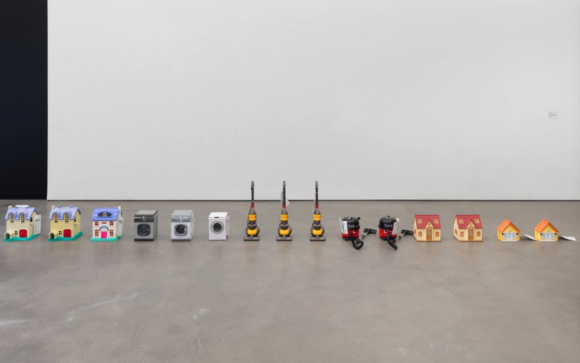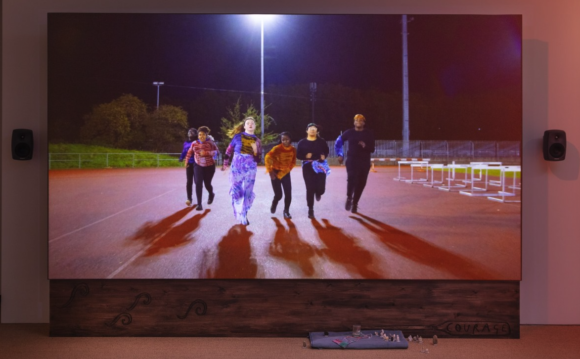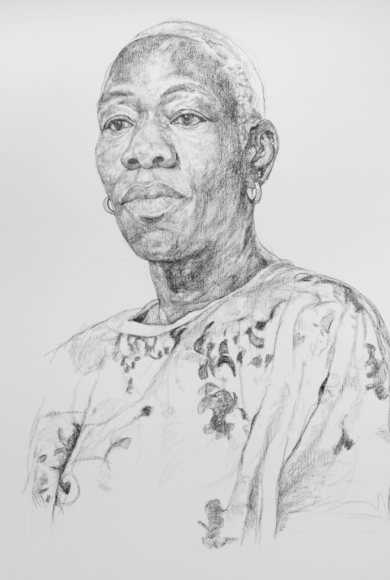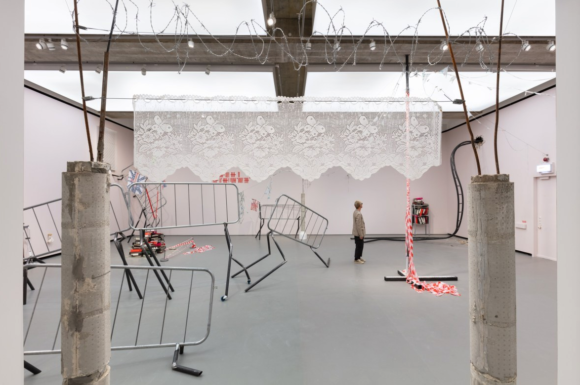A few will take notice when the winner of the 2023 Turner prize is announced on Tuesday. Most won’t. It’s been many a season since the once fierce Turner battled its way on to the nation’s front pages and forced Britain to take an interest in contemporary art.
This year’s version takes place at the Towner gallery in Eastbourne where I bussed my way on the rail replacement service with a sense of art critical duty untouched by hope or excitement. But — and this really is a big surprise — someone in the art heavens has taken pity on the situation and decided to make the 2023 Turner rather effective. The four shortlisted artists all make useful contributions. Also on show is that rarest of all Turner prize qualities — talent.
We start with Ghislaine Leung, a creator of installations who occupies an airy gallery on the ground floor. The curators try their best to put us off her work by informing us in their tone-deaf mechanical artspeak that “Ghislaine Leung’s practice takes a critical look at the conditions of art production, its presentation and circulation” when what they mean is that the artist is a mother who has to juggle domestic duties with artistic ambition and manages to make compelling art out of the conundrum.

It’s most obvious in a wall drawing that carefully graphs the time she spends on domestic duties against the hours she spends on art. Sitting like the kaaba in the middle of a white grid, a small black square represents her art time while the surrounding expanse of white represents the domestic duties.
A row of toys — mini vacuum cleaners, washing machines, doll’s houses — continues this distaff lament on domestic programming: if you want the girls to hoover, get them young. Looming over it all is a network of shiny pipes created from the air conditioning system of a refurbished Belgian art space. The ambition here, I intuit, is to lay bare the support systems needed to keep a contemporary art space going — hello, Towner! It’s like revealing the veins and arteries of a human body.
As with all conceptual artists, Leung has simple ideas to which she likes to give complicated explanations. It’s the approach favoured in line one, page one of the conceptual art handbook. What makes her stand out — what makes her good — is the visual impact of her work. There’s a genuine minimalist beauty to the careful arrangement of shiny pipes and spare wall drawings. It’s all topped off with a splashy fountain that destroys the sanctified hush of the Towner with the imported noise of somewhere else.

On the next floor the “multidisciplinary artist” Rory Pilgrim gives us films, paintings and music, all jumbled up in a single gallery experience. The aptly named Pilgrim is a proselytiser for the balmy effects of art. The work presented here was created during Covid and involved the people of Barking and Dagenham collaborating with Pilgrim, the chief result of which was a film, Rafts, in which Barking locals sing, dance, talk and read poetry with Pilgrim’s encouragement. The rafts in the title turn out to be the creativity you can cling to in tough times.
Kids run up and down a race track pirouetting and twirling moves they have learnt from Diversity on the telly. Sad kitchen poets recite their sad kitchen poetry. It’s heartwarming stuff: Britain’s Got Talent with a kindly edge. Where it gets impressive rather than societally comforting is when everyone starts singing Pilgrim’s songs. They are haunting and brilliant. Rory, trust me: you’ll never cut it as a film-maker or a painter, but as a musician and composer you’ve got serious talent.

So has Barbara Walker, who fills her Turner space with bold and affecting portraits of assorted members of the Windrush generation. Some of these impressive portraits, done simply with charcoal, are displayed on a big wall where their presence feels looming and heroic. But the same faces appear as well in a series of complex works in which they are combined with various documents and examples of British bureaucracy — from the Home Office, the local MP, the lawyer handling the case — that offer grim little glimpses into the plight of the Windrush generation. Amazingly, the reproduced letters, like the portraits woven into them, have been minutely drawn by Walker. It’s powerful and moving work.

Finally there is Jesse Darling, another installation maker who, the curators pipe up, uses “materialist poetics to explore and reimagine the everyday technologies that represent how we live”. Hmmm. A messy arrangement of distorted crowd control barriers, barbed wire, homemade Union Jacks and bits of mine-making railway equipment turning into a broken rollercoaster create a fuzzy sense of somewhere grim, controlled, ruined. I suppose it’s a glumly poetic interpretation of Britain today. Where it fails is in its overall visual impact. It’s too bitty.
Still, one failure, three successes isn’t a bad ratio. Indeed, by recent Turner prize standards it’s a huge upturn. If the winner announced on Tuesday is Leung, Pilgrim or Walker, I’ll be happy. They all deserve it.
Turner Prize, at the Towner, Eastbourne, until Apr 14
